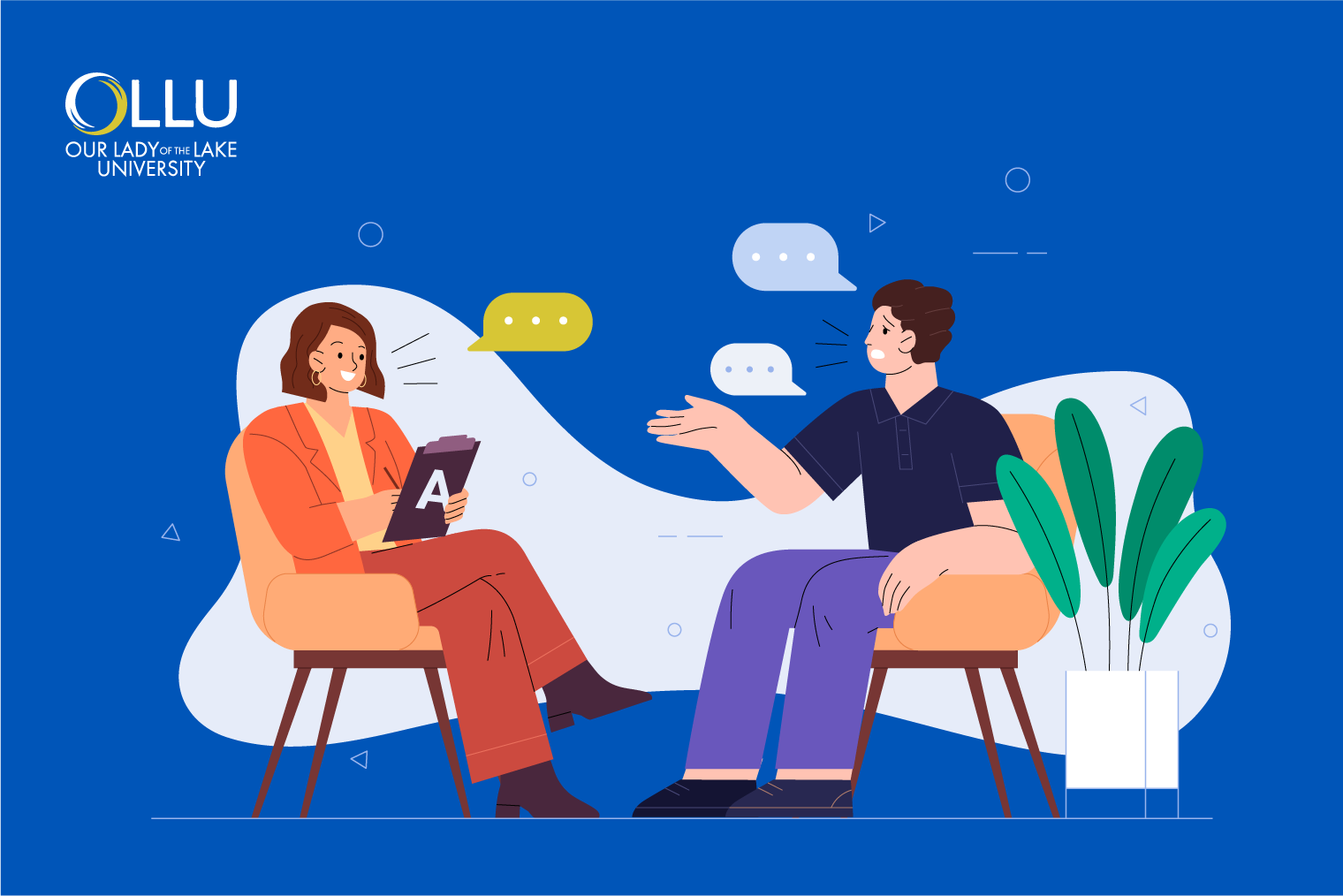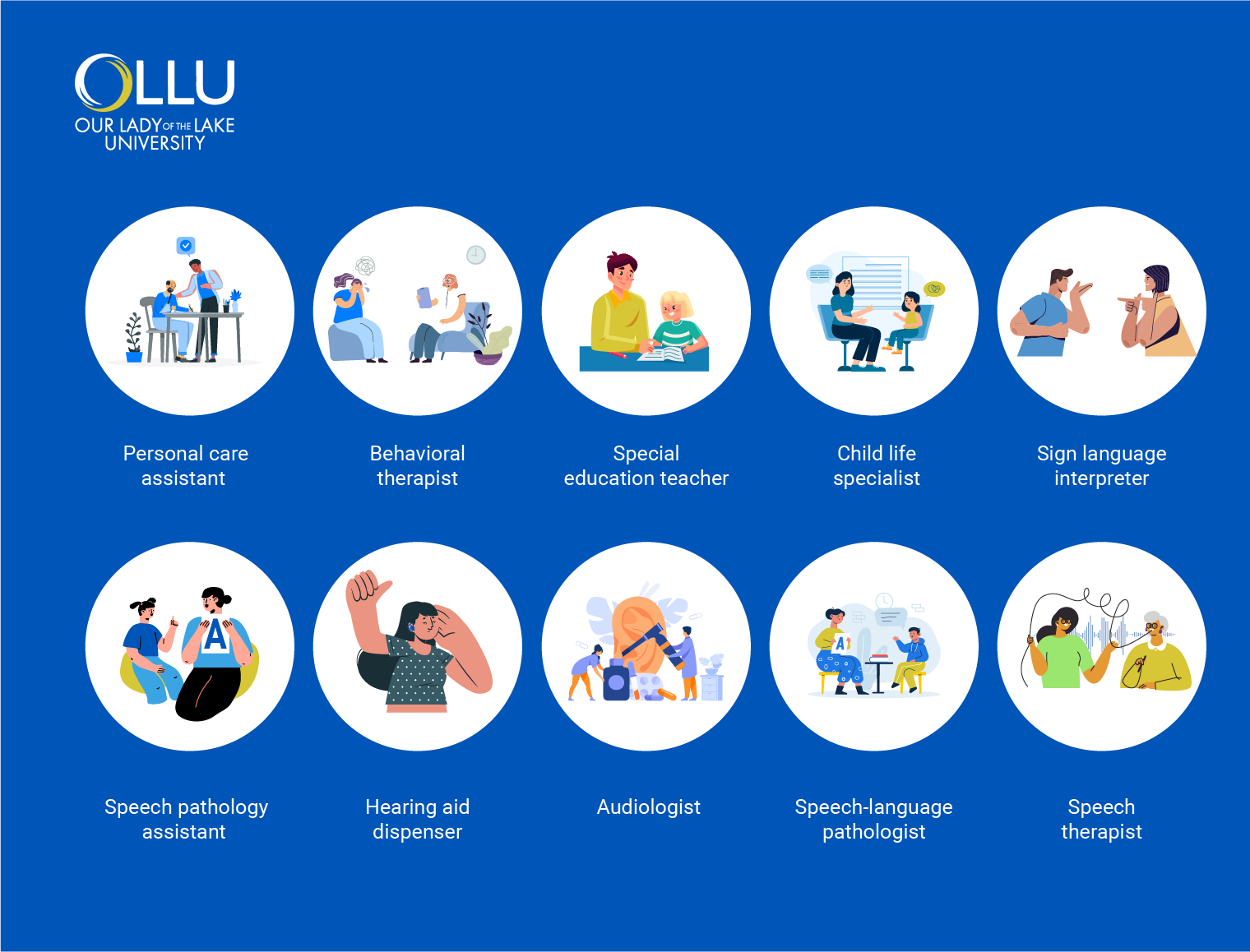Communication Sciences and Disorders Jobs
Feb 20, 2024

Communication Sciences and Disorders (CSD) encompass various professions vital to
understanding, diagnosing, and treating communication disorders and differences. From
speech-language pathology to audiology, the scope of communication sciences permeates
numerous professional fields, ranging from healthcare and education to research and
technology. Professionals in communication sciences and disorders jobs play a crucial
role in enhancing the quality of life for individuals with communication challenges,
facilitating effective communication, and advocating for inclusive practices. This
blog post will explore the significance and breadth of opportunities within communication
sciences and disorders jobs.
What Is a Communication Sciences and Disorders Degree?
A Communication Sciences and Disorders degree encompasses studying various aspects of human communication, including speech, language, hearing, and swallowing disorders. Students pursuing this degree typically engage in coursework that delves into the fundamentals of communication development and disorders, anatomy and physiology of speech and hearing mechanisms, assessment and intervention techniques, and communication's social and cultural aspects. Through classroom learning, laboratory experiences, and clinical practice, students acquire the knowledge and skills necessary to assess, diagnose, and treat people with communication disorders across their lifespan. Potential career paths for Communication Sciences and Disorders graduates include speech-language pathology, audiology, speech therapy, clinical research, education, and advocacy within healthcare and educational settings. This degree equips individuals with the expertise to make meaningful contributions to improving communication outcomes for diverse populations.
10 Communication Sciences and Disorders Jobs

1. Behavioral therapist
Behavioral therapists employ evidence-based strategies rooted in behavioral psychology to address behavioral issues. They assess clients' behaviors, identify contributing factors, and develop personalized treatment plans for positive behavior change. Communication is key, as therapists use verbal and nonverbal cues to establish rapport, set expectations, and provide feedback. They teach effective communication skills to enhance clients' ability to express needs and navigate social interactions. Through interventions like applied behavior analysis (ABA) or cognitive-behavioral therapy (CBT), therapists help individuals develop coping mechanisms and self-regulation strategies. Effective communication fosters collaboration, empowering individuals to make meaningful changes and improve their quality of life.
2. Special education teacher
Special education teachers utilize communication skills to support students with different learning needs by creating inclusive and supportive learning environments. These educators effectively communicate with students, parents, caregivers, and other professionals to understand individualized education plans (IEPs), adapt teaching strategies, and address specific learning challenges. They employ various communication techniques, such as visual aids, verbal prompts, and differentiated instruction, to cater to students' unique needs and facilitate their academic, social, and emotional development. Through clear and empathetic communication, special education teachers foster positive relationships, promote self-confidence, and advocate for students' rights to equitable education opportunities.
3. Sign language interpreter
The responsibilities of a sign language interpreter encompass facilitating communication between deaf or hard-of-hearing individuals and others. These skilled professionals accurately convey spoken language into sign language and vice versa, ensuring effective communication in different settings such as educational institutions, healthcare facilities, business meetings, and community events. Sign language interpreters adhere to ethical standards and confidentiality guidelines, maintain neutrality, and strive for cultural sensitivity to bridge linguistic and cultural barriers. They may also provide clarification, cultural mediation, and advocacy to enhance accessibility and promote equal participation for deaf individuals in diverse social contexts.
4. Speech-language pathologist
Speech-language pathologists play crucial roles in diagnosing and treating communication disorders across the lifespan. Their duties involve conducting comprehensive assessments to evaluate speech, language, voice, and swallowing abilities and identifying communication challenges and their underlying causes. Speech-language pathologists develop tailored treatment plans using evidence-based interventions to improve clients' communication skills, enhance swallowing function, and promote overall quality of life. They collaborate with interdisciplinary teams, including physicians, educators, and other healthcare professionals to provide holistic care and support clients in achieving their communication goals through therapeutic exercises, counseling, and assistive technology.
5. Speech pathology assistant
The supportive role of a speech pathology assistant involves assisting speech-language pathologists in various aspects of clinical practice. These assistants work under the supervision of SLPs to implement treatment plans, conduct therapy sessions, and support clients with communication disorders. They may assist in administering assessments, documenting progress, and facilitating communication activities in educational or clinical settings. Speech pathology assistants play a vital role in supporting clients' communication development and improving their quality of life by ensuring the smooth operation of therapy sessions and implementing therapeutic techniques effectively.
6. Speech therapist
Speech therapists are responsible for helping individuals improve their communication skills through assessment, diagnosis, and treatment of speech and language disorders. They work with clients across all age groups, from kids with developmental delays to adults recovering from neurological conditions or injuries. Speech therapists develop personalized treatment plans tailored to client's specific needs, utilizing various techniques such as articulation exercises, language drills, and augmentative communication strategies. They also provide counseling, education, and support to clients and their families to facilitate progress and enhance communication abilities in daily life.
7. Hearing aid dispenser
The role of a hearing aid dispenser revolves around assisting individuals with hearing loss in selecting and fitting hearing aids to improve their auditory function. These professionals conduct thorough assessments of clients' hearing abilities, recommend appropriate hearing aid devices based on individual needs and preferences, and provide guidance on device usage and maintenance. Hearing aid dispensers ensure proper fitting and adjustment of hearing aids, conduct follow-up appointments to monitor progress, and offer ongoing support and counseling to optimize clients' hearing outcomes and enhance their communication experiences in various listening environments.
8. Audiologist
Audiologists diagnose and treat hearing-related disorders, including hearing loss and balance issues. Their duties involve:
- Conducting comprehensive hearing evaluations
- Interpreting diagnostic test results
- Providing personalized treatment plans tailored to client's specific needs and preferences
Audiologists offer various services, including hearing aid fittings, cochlear implant evaluations, balance assessments, and auditory rehabilitation. They collaborate with other healthcare professionals to holistically address clients' communication and hearing needs and advocate for accessible and inclusive environments for individuals with hearing impairments.
9. Personal care assistant
Personal care assistants support individuals with communication needs in their daily activities by providing hands-on assistance and emotional support. These caregivers assist with bathing, dressing, grooming, and meal preparation while engaging in meaningful interactions to promote socialization and well-being. Personal care assistants communicate effectively with clients, family members, and healthcare professionals to ensure continuity of care and address individual preferences and needs. They play a vital role in enhancing clients' quality of life and fostering independence through compassionate care and respectful communication.
10. Child life specialist
Child life specialists help children and families cope with healthcare experiences through effective communication and psychosocial support. These professionals create therapeutic play experiences, prepare children for medical procedures, and provide emotional support and education to promote resilience and coping skills. Child life specialists communicate with children at their developmental level, using age-appropriate language and techniques to facilitate understanding and alleviate anxiety. They collaborate with interdisciplinary teams, including medical staff and family members, to advocate for children's emotional and developmental needs and ensure a supportive and nurturing healthcare environment.
What Communication Sciences Job Pays the Most?
Among the listed communication sciences jobs, speech therapists typically earn the highest salaries, with a national average salary of $101,130 per year, according to data from Indeed. Following closely are speech-language pathologists, earning an average of $93,371 annually. Audiologists rank next in salary, with an average annual income of $77,899. Hearing aid dispensers also command relatively high salaries, averaging $59,553 annually. Sign language interpreters earn slightly less, with an average salary of $56,597 per year. Child life specialists have an average salary of $52,470 annually, while special education teachers typically earn $51,509 annually. Behavioral therapists follow with an average salary of $40,372.8 per year. Speech pathology assistants earn an average of $58,136 per year, and personal care assistants have the lowest average salary among the listed communication sciences jobs, at $24,024 per year.
Job Outlook
The job outlook for communication sciences professionals, especially speech-language pathologists (SLPs), is promising. Data from the Bureau of Labor Statistics (BLS) projects a 19% growth in SLP employment from 2022 to 2032, much faster than the average for all occupations. This growth is fueled by factors like an aging population with increased speech-related disorders, greater awareness of early intervention benefits, and advancements in medical technology. As a result, job opportunities for communication sciences professionals are expected to increase significantly across healthcare, educational, and community settings.
Bottom Line
The diverse career options in communication sciences, such as speech therapists, sign language interpreters, and audiologists, play vital roles in addressing speech, language, hearing, and swallowing disorders to improve individuals' lives. While compensation levels vary, roles like speech therapists and speech-language pathologists offer particularly lucrative opportunities. Beyond financial rewards, pursuing a career in communication sciences enables professionals to make a profound impact on individuals with communication challenges, enhancing overall well-being. This fulfilling path is dedicated to improving lives through effective communication, making it an ideal choice for those passionate about making a difference. If you are interested in pursuing a career in this field, start by exploring OLLU's BA and MA programs in Communication Sciences and Disorders.
Frequently Asked Questions (FAQs):
How do you treat communication disorders?
Communication disorders are treated through speech therapy, language therapy, auditory training, counseling, and assistive devices like hearing aids or communication boards. Treatment plans are personalized and may involve combining techniques to improve communication skills.
What are the 4 types of communication disorders?
The four main types of communication disorders are speech disorders (e.g., stuttering), language disorders (e.g., expressive or receptive language disorders), hearing disorders (e.g., deafness), and swallowing disorders (e.g., dysphagia). Each type can affect communication differently.
What does communication science do?
Communication science studies human communication processes, dynamics, and factors affecting effectiveness, including language, technology, and culture. It also explores communication disorders and strategies to enhance outcomes.
Why should I study communication science?
Studying communication science provides insights into effective communication, aiding in message delivery, conflict resolution, and relationship-building. It offers diverse career opportunities in fields like speech-language pathology, public relations, and journalism, where strong communication skills are crucial.